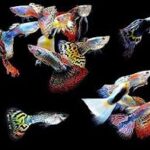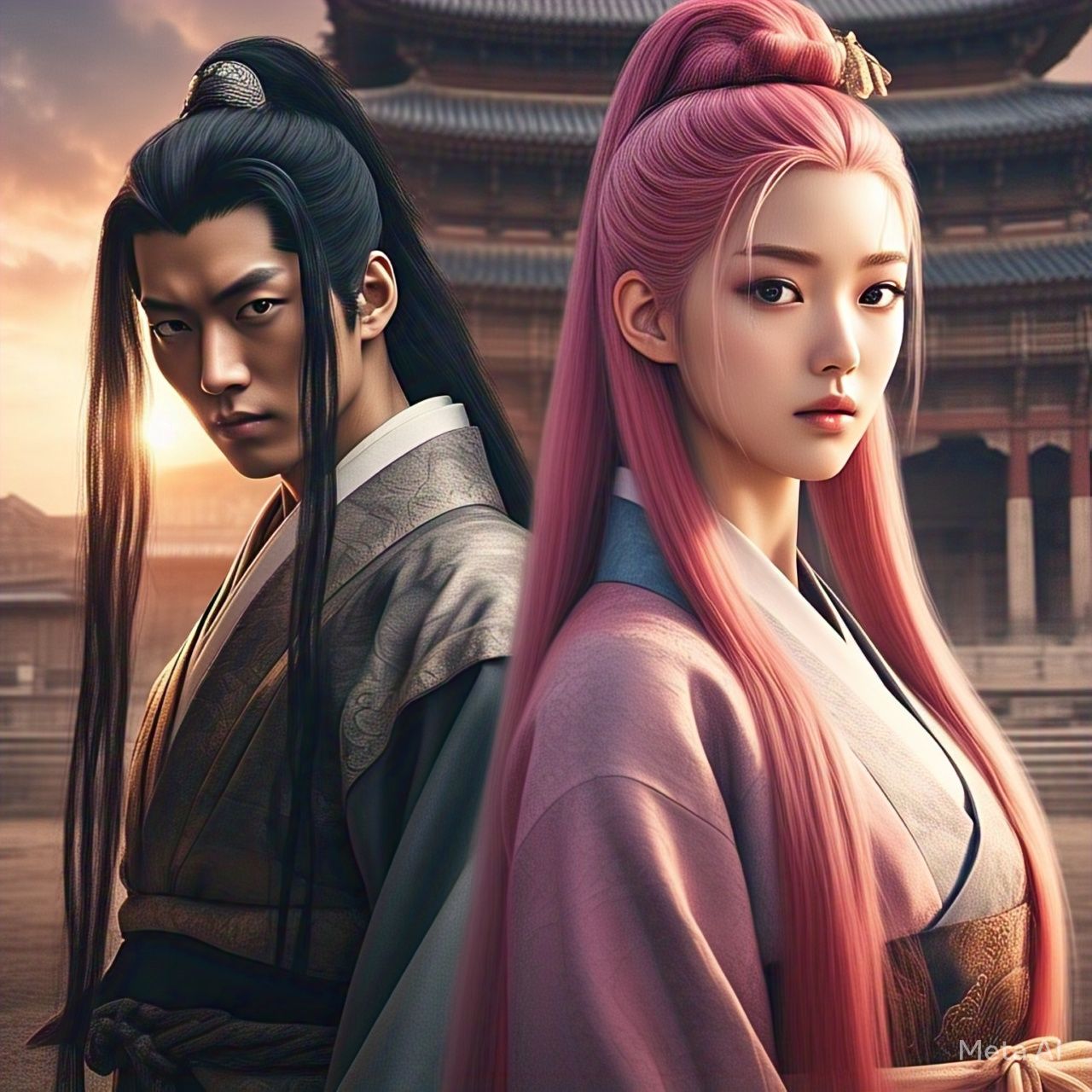The Cultural Significance of Long Hair in East Asian Traditions
In many cultures, hair has long been seen as a symbol of identity, beauty, and status. In East Asia, the representation of hair is not merely about fashion or style; it often carries with it profound cultural meanings. From the deep traditions of Confucianism to modern representations in popular media like K-dramas and anime, long hair has remained an iconic feature of feminine beauty. But what does it represent, and how has its symbolism evolved over time in Asian societies?
The roots of hair symbolism in East Asia can be traced back to ancient traditions, where long, flowing hair was associated with purity, innocence, and elegance. In Confucian thought, long hair was regarded as a mark of respect for one’s family, as hair was believed to be a gift from one’s parents. In this context, cutting one’s hair was seen as a serious violation of filial piety, and the act of maintaining long hair represented an individual’s connection to their ancestry and culture.
As centuries passed and new dynasties emerged, the cultural importance of long hair remained deeply embedded within East Asian societies. Women, in particular, were expected to maintain long, healthy hair as a part of their personal and familial honor. In traditional Chinese society, for example, women would spend hours each day meticulously combing and styling their long hair, as it was considered a direct reflection of their inner character and social standing. The elaborate hairstyles worn by women during the Tang Dynasty, known for their intricate updos and accessories, are a perfect example of how long hair was used to convey status and refinement.
However, the significance of long hair in East Asia was not confined to women alone. In ancient Korea, during the Joseon Dynasty, long hair was a symbol of masculinity and dignity for men, with certain hairstyles indicating social rank or professional status. Men with long, neatly groomed hair were seen as respectful and disciplined, reinforcing the importance of personal appearance as a reflection of one’s moral character.
As East Asian societies entered the modern era, the symbolism of long hair began to evolve. With the introduction of Western-style fashion and the rise of globalization, traditional views on long hair started to shift, particularly in the realm of entertainment. It was during the 20th century that the modern image of long-haired women, from the elegant, poised figures in period dramas to the fierce and rebellious female leads in contemporary K-dramas and anime, began to take shape. These women, though varied in personality and storylines, all embodied a sense of power and allure through their long hair, which had now transcended its historical symbolism and become a universal symbol of femininity and strength in popular culture.
In the context of K-dramas, long hair is often used to underscore a character’s inner strength and complexity. Female leads with long, flowing hair are frequently portrayed as determined, resilient, and multifaceted, able to balance both traditional values and modern aspirations. From the gentle yet strong-hearted characters in historical dramas to the more dynamic, independent women of contemporary settings, long hair plays a key role in defining their personalities and their journeys.
Similarly, in the world of anime, the representation of female characters with long hair has become an iconic visual element, linking femininity with supernatural strength, mystery, and beauty. Characters like Sailor Moon and Asuka Langley from Neon Genesis Evangelion are perfect examples of how long hair can serve as an extension of a character’s emotional depth, personality, and overall aura. These characters are not just defined by their beauty or strength; their long hair often symbolizes the power they possess to overcome challenges and navigate complex worlds.
The intersection of long hair with character development in both K-dramas and anime also taps into broader societal trends and ideals. In these forms of media, long hair is not only a symbol of beauty but also a metaphor for freedom, transformation, and personal growth. For many viewers, these characters become representations of hope, resilience, and the ability to shape one’s own destiny. It is no surprise that the iconic image of a long-haired heroine has endured across decades of evolving fashion, storytelling, and cultural shifts in East Asia.
As we look at the role of long hair in both K-dramas and anime, it’s clear that this cultural symbol continues to have a lasting impact. Whether in the context of historical narratives or modern-day dramas, the representation of long hair transcends mere aesthetics. It is a visual cue that resonates with audiences on a deeper level, evoking a sense of cultural continuity while also speaking to the changing ideals and aspirations of contemporary society.
Long hair in East Asian pop culture, therefore, holds significant cultural weight and is an enduring symbol of femininity, beauty, and strength. As the portrayal of women in K-dramas and anime continues to evolve, the long-haired heroine remains an iconic figure, carrying with her the weight of history while simultaneously embodying modern-day ideals of empowerment and independence.
The Role of Long Hair in Shaping Female Characters in K-Dramas
Korean dramas, or K-dramas, have become a dominant force in global entertainment, influencing millions of viewers worldwide with their captivating storytelling, engaging plots, and memorable characters. Among the many elements that make these shows unforgettable, the portrayal of female characters with long, flowing hair stands out as one of the most iconic and significant aspects of the genre. The image of the long-haired female lead has become a staple of K-dramas, transcending generations and evolving with the changing dynamics of Korean society.
One of the most prominent ways that long hair is used in K-dramas is as a symbol of femininity and grace. In many period dramas, such as Moon Lovers: Scarlet Heart Ryeo and Love in the Moonlight, the female leads are often shown with long, intricately styled hair that complements their regal and delicate appearances. In these settings, long hair is more than just a fashion choice; it serves as an embodiment of the characters’ nobility, dignity, and purity. These women are often depicted as gentle yet strong, with their long hair becoming a visual representation of their inner beauty and moral strength.
In contrast, modern-day K-dramas tend to approach the representation of long hair in a slightly different manner. While still associating long hair with beauty, contemporary shows like Descendants of the Sun and Goblin emphasize the character’s independence, strength, and resilience through their long hair. For instance, in Descendants of the Sun, the character of Dr. Kang Mo-yeon, played by Song Hye-kyo, is a strong and competent woman who is constantly portrayed as capable and self-assured. Her long, sleek hair becomes a reflection of her grace under pressure, balancing professionalism with femininity. In such dramas, long hair is used to show that beauty and strength are not mutually exclusive but can coexist in a single character.
The role of long hair in K-dramas also ties into the evolving image of women in Korean society. Historically, Korean women were expected to conform to traditional ideals of femininity, which often meant portraying a reserved and gentle persona. The long-haired, demure female lead was the epitome of these values, representing the quiet strength that was admired in traditional Korean culture. However, with the rise of the “modern woman” in K-dramas, the portrayal of long hair has evolved to accommodate a broader spectrum of female identities.
In shows like My Lovely Sam Soon and Strong Woman Do Bong Soon, the female leads with long hair are not just portrayed as sweet and gentle but as bold, assertive, and determined. These characters challenge the conventional norms of femininity by embracing their strengths and flaws. Long hair, in this context, becomes a tool for these characters to express their uniqueness and to navigate a world where they are learning to define their own paths. For example, the character of Do Bong Soon in Strong Woman Do Bong Soon uses her long hair as part of her quirky, fun, and confident personality. Although she is a superhero with extraordinary strength, her long hair maintains a sense of softness and vulnerability, allowing her to balance her superhuman abilities with her deeply human qualities.
Long hair also plays a significant role in character development throughout the course of a K-drama. Often, as a female character undergoes personal growth or a transformation, her hair will also evolve. In many K-dramas, the female lead’s hair is meticulously styled at the beginning of the series, usually long and perfect, reflecting her idealized state. As the plot progresses, her character may go through challenges or hardships, and her hair often mirrors these changes. A dramatic cut or a shift in the way her hair is styled can signal a transformation in the character’s mindset, emotional state, or personal journey.
For example, in Boys Over Flowers, the character of Geum Jan-di starts the series with a youthful, carefree attitude, her hair flowing freely and symbolizing her innocent and optimistic view of the world. As her character experiences the ups and downs of love, betrayal, and personal growth, her hair undergoes subtle changes that reflect her shifting emotional landscape. By the end of the series, Jan-di’s hair is more refined and sophisticated, a physical manifestation of her maturation and newfound strength.
The portrayal of long hair in K-dramas also plays a crucial role in the romantic element of these shows. Hair, as a symbol of femininity and beauty, becomes a tool for the female lead to captivate the male lead or to symbolize a deeper connection between the two characters. In many K-dramas, there are moments where the male lead will gently run his fingers through the female lead’s long hair or where the two share intimate moments in which the hair becomes a focal point of attraction and affection. These visual cues are significant because they emphasize the character’s appeal and the developing romantic relationship.
In The Heirs, for instance, the female lead, Cha Eun-sang, played by Park Shin-hye, is often seen with long, flowing hair that reflects her elegance and emotional depth. As she navigates a complicated love triangle with the two male leads, her hair becomes an important part of the narrative, reinforcing her connection to each character. Long hair in this context becomes a silent participant in the love story, enhancing the emotional intimacy between the characters.
Beyond the romantic and aesthetic aspects, the role of long hair in K-dramas also reflects broader cultural changes within South Korea. As Korean society has become more progressive and open to diverse forms of self-expression, the portrayal of women with long hair in K-dramas has also shifted. Women are no longer confined to traditional gender roles, and their long hair becomes an emblem of their freedom, independence, and ability to shape their own destiny. These characters are no longer just the passive recipients of love and attention; they are active agents in their own stories, demonstrating strength, resilience, and complexity.
In conclusion, the depiction of long hair in K-dramas is much more than a stylistic choice. It serves as a powerful cultural symbol, one that encapsulates the many facets of femininity, strength, and beauty. From historical dramas to modern-day stories, long hair continues to play a pivotal role in shaping the identities of female characters, reflecting their emotional growth, personal transformations, and evolving roles in Korean society.
The Influence of Long Hair in Anime: A Symbol of Power and Mystery
Anime, with its diverse range of genres and characters, has always captivated audiences around the world. From heartwarming stories to intense action-packed adventures, anime has introduced viewers to countless iconic characters. Among these characters, many have long hair that plays a crucial role in defining their personalities, enhancing their visual appeal, and symbolizing deeper themes such as strength, mystery, and transformation. Long hair in anime is not just an aesthetic choice but an integral part of how characters are perceived, whether they are heroes, anti-heroes, or villains.
The portrayal of female characters with long hair in anime is an enduring trend that goes beyond beauty. In many cases, long hair is used as a powerful visual tool to represent a character’s inner strength, complexity, and even supernatural abilities. For instance, in Sailor Moon, Usagi Tsukino, the protagonist, has long, flowing blonde hair that becomes a symbol of her transformation from an ordinary schoolgirl to a powerful warrior. Usagi’s long hair signifies her purity, innocence, and unyielding determination. As she grows into her role as Sailor Moon, her hair also becomes a representation of her power, symbolizing her ability to fight evil and protect those she loves.
In anime, long hair is often associated with characters who possess extraordinary abilities or hold significant influence in the story. Take, for example, Asuka Langley from Neon Genesis Evangelion. Asuka’s long, fiery red hair mirrors her bold and assertive personality. Throughout the series, her hair becomes a symbol of her fiery spirit and the emotional complexity that defines her character. Asuka’s long hair is also a key visual element that contrasts with the more reserved and introspective Rei Ayanami, another female character with shorter hair. The difference in their hair length symbolizes the contrast in their personalities and roles within the story, with Asuka’s long hair emphasizing her strength and defiance.
In Naruto, the character of Tsunade, a legendary ninja, is another example of how long hair is used to highlight a character’s power and status. Tsunade’s long, blonde hair, often tied back into a loose ponytail, reflects her formidable strength and leadership qualities. As one of the most skilled and respected ninja in the series, Tsunade’s long hair represents not just her beauty but also the responsibility and authority she carries. In many ways, her hair becomes a visual marker of her role as a mentor and protector within the narrative, symbolizing both her wisdom and her fierce determination.
Long hair in anime also frequently serves as a symbol of mystery and allure. Characters like Nana Osaki from Nana and Rosa Lalalie from Black Clover use their long hair to project an air of elegance, sophistication, and secrecy. In Nana, Nana Osaki’s long, dark hair is a reflection of her rockstar persona and the emotional depth that defines her character. Her hair not only complements her rebellious nature but also acts as a form of self-expression, allowing her to project an image of independence and vulnerability at the same time. Similarly, Rosa Lalalie from Black Clover, with her long silver hair, exudes an enigmatic presence that captivates those around her. Her hair adds to the sense of intrigue that surrounds her character, making her seem both powerful and distant.
The use of long hair in anime is not limited to characters who are depicted as traditionally feminine or beautiful. Many female characters with long hair are portrayed as strong, independent, and complex individuals. Take Mikasa Ackerman from Attack on Titan, whose long, dark hair is a defining characteristic of her resilience and unyielding determination. Mikasa’s hair is not simply a visual element of beauty; it is a part of her identity as a fierce warrior. Her hair is often seen flowing freely as she battles titans, symbolizing her freedom, strength, and resolve. In Mikasa’s case, long hair becomes a visual metaphor for her refusal to be constrained by the limitations placed on her, both in terms of her gender and her role in the story.
Similarly, Yuno Gasai from Future Diary is a character whose long pink hair embodies her dual nature of sweetness and danger. Yuno’s hair is often shown as wild and untamed, much like her unpredictable personality. It reflects her intense love for the protagonist, Yukiteru, as well as her capacity for violence and obsession. Yuno’s long hair becomes a symbol of her emotional volatility, making her one of the most compelling and memorable characters in anime.
In some anime, long hair serves as a visual representation of a character’s journey or transformation. In Fruits Basket, the character of Tohru Honda’s hair undergoes subtle changes throughout the series. At the beginning, Tohru’s hair is often messy and unkempt, mirroring her humble, optimistic nature. As she grows emotionally and gains a deeper understanding of herself and the people around her, her hair becomes more refined and composed, reflecting her inner growth. The transformation of Tohru’s hair highlights the character’s emotional development and her increasing confidence, symbolizing her journey toward self-realization and empowerment.
In the world of anime, long hair also plays a significant role in the portrayal of characters who are part of supernatural or fantastical worlds. Characters like Rukia Kuchiki from Bleach and Hinagiku Katsura from Hayate the Combat Butler are often depicted with long hair, representing their connection to otherworldly powers. In Bleach, Rukia’s long hair is a visual cue of her spiritual strength and her role as a Soul Reaper. Her hair, which often flows in battle, emphasizes her power and the gravity of her mission to protect the living world from evil spirits.
The connection between long hair and supernatural abilities is also evident in characters like Kagome Higurashi from Inuyasha. Kagome’s long hair is symbolic of her dual existence in both the modern world and the feudal past. Her hair is an extension of her identity as a sacred miko (priestess) and a key player in the battle against dark forces. Just like her spiritual powers, her hair becomes a symbol of her connection to a larger, more profound world beyond her own.
In conclusion, long hair in anime serves as much more than a visual accessory; it is a symbol of power, mystery, beauty, and personal growth. The female characters with long hair in anime are often portrayed as multifaceted individuals who embody a combination of strength, vulnerability, and complexity. Whether they are heroes, anti-heroes, or villains, their long hair becomes an integral part of their identity, contributing to the viewer’s understanding of their roles in the story. From supernatural warriors to modern-day heroines, long hair in anime is a potent visual tool that adds depth to characters and enhances the themes explored within the narrative.
The Global Impact of Long Hair in K-Drama and Anime: Influence on Beauty and Fashion Trends
The depiction of long hair in both K-Dramas and anime has not only shaped the characters in these popular forms of entertainment but has also had a profound influence on broader cultural trends, especially in beauty and fashion. Characters with flowing, well-maintained long hair have become icons whose styles are emulated by fans, and these trends extend far beyond the screen. From Seoul to Tokyo, and even internationally, the allure of long hair is deeply ingrained in the public’s perception of beauty, identity, and cultural aspiration.
In the world of K-Dramas, actresses with long, glossy hair often set beauty standards that audiences around the globe aspire to. As previously discussed, characters like Cheon Song-yi from My Love from the Star and Kim Ji-won from Descendants of the Sun have become symbols of grace and elegance. The presence of long hair in these K-Drama characters doesn’t simply signify femininity; it also conveys a sense of sophistication and status. The meticulously styled hair of these actresses often mirrors the sleek, fashionable, and polished image that is highly valued in South Korean society. These portrayals shape not only how viewers view the characters but also how they view themselves.
The impact of long hair in K-Dramas on beauty trends is undeniable. When viewers see their favorite actresses sporting specific hairstyles, they are often inspired to replicate them in their own lives. From elegant waves to sleek, straight styles, the hairstyles worn by K-Drama queens are highly influential in shaping consumer choices and setting new standards in the beauty industry. Products such as hair extensions, serums, and conditioners gain widespread popularity as fans seek to achieve the same luxurious, flowing locks as the actresses they admire.
The influence of long hair in K-Dramas extends beyond Korea, reaching audiences worldwide. The Korean Wave, or Hallyu, has brought K-Dramas and their iconic hairstyles to international audiences, sparking a global fascination with Korean beauty trends. In particular, long hair has become associated with a youthful, elegant, and aspirational lifestyle. The widespread popularity of Korean beauty brands, many of which emphasize the importance of hair care, further underscores how long hair is not only a visual symbol in entertainment but a key component of a broader cultural trend.
The global appeal of anime and its long-haired characters has also had a significant impact on the beauty and fashion industries, particularly in Japan but also across many other parts of the world. Characters like Sailor Moon, Asuka Langley, and Mikasa Ackerman from Attack on Titan have become ingrained in pop culture, with their long hair serving as a defining characteristic that contributes to their iconic status. These characters have become global symbols of empowerment, strength, and beauty, influencing everything from fashion to hair styling.
In Japan, the fashion industry has long drawn inspiration from anime characters, and long hair plays an important role in this trend. From cosplay to everyday fashion, fans often use anime characters as style references. Long hair, especially when paired with specific hairstyles seen in anime, is frequently imitated by those wishing to embody the essence of their favorite characters. The influence of anime on fashion is particularly evident in the street style seen at events like Comic Market in Tokyo, where attendees frequently dress as characters with long hair, adopting their iconic looks as a form of self-expression.
Anime-inspired hairstyles, especially those involving long, voluminous locks, have also made their way into mainstream fashion. Hair salons in Japan and other parts of Asia often see a rise in clients requesting styles based on popular anime characters. These anime-influenced hairstyles often feature bold, dramatic cuts, vivid colors, and layers that mirror the exaggerated and expressive styles seen in animated shows. As a result, long hair in anime becomes a catalyst for broader cultural trends, influencing not only the beauty industry but also fashion choices, makeup trends, and even body image perceptions.
One significant way in which long hair in anime influences beauty and fashion trends is through the cosplay community. Cosplayers, who dress up as their favorite anime or manga characters, often pay great attention to the details of their character’s appearance, including their hair. For many cosplayers, long hair is an essential component of faithfully recreating a character’s look. The art of wig styling has become a professional skill in itself, with many cosplayers investing in custom-made wigs that resemble the flowing tresses of iconic characters. This trend is not limited to Japan but has spread globally, with anime conventions around the world showcasing the dedication of fans to emulate the characters’ hair and overall look.
Beyond cosplay, long hair in anime has also been adopted by fashion-forward individuals looking to add an element of fantasy to their personal style. The rising popularity of Harajuku fashion in Japan, known for its eclectic and bold approach to personal expression, often incorporates elements from anime, including long, colorful wigs and hairstyles. This blending of anime culture with street fashion demonstrates how the depiction of long hair in anime transcends traditional boundaries, influencing not only the entertainment industry but also the fashion industry.
The fascination with long hair in both K-Drama and anime has also played a role in redefining beauty standards, particularly for women. In both cultures, long hair is often associated with femininity and attractiveness, yet it is also frequently linked with strength and independence. This duality in the symbolism of long hair provides a powerful statement about the evolving role of women in both fictional narratives and real life. The women who wear long hair in these shows are not passive figures but strong, multidimensional characters who command attention, respect, and admiration.
This changing perception of long hair as both a symbol of beauty and strength has led to its increased prevalence in fashion trends around the world. Long hair, once seen solely as a passive marker of beauty, is now embraced as a dynamic tool of self-expression. In this context, long hair is not just an aesthetic choice but a reflection of a person’s identity, agency, and ability to shape their own narrative.
Moreover, the ongoing appeal of long hair in both K-Drama and anime is a testament to the enduring power of these mediums in shaping global beauty ideals. As K-Drama continues to dominate international streaming platforms and anime maintains its vast following, the cultural significance of long hair remains a consistent and influential trend. Whether it is through the graceful elegance of K-Drama queens or the powerful, mysterious aura of anime icons, long hair continues to be an enduring symbol of beauty, strength, and individuality.
In conclusion, the power of long hair in Asian pop culture, particularly within K-Dramas and anime, cannot be overstated. From its role in defining iconic characters to its influence on global beauty and fashion trends, long hair serves as a visual and symbolic cornerstone in the portrayal of female strength, elegance, and individuality. The impact of these media on the beauty industry is profound, and long hair remains a key element of both the personal and cultural expression of femininity across the globe. As long as K-Dramas and anime continue to inspire audiences, the allure of long hair will remain a powerful symbol of beauty, empowerment, and timeless appeal.










